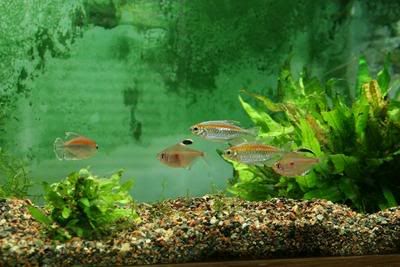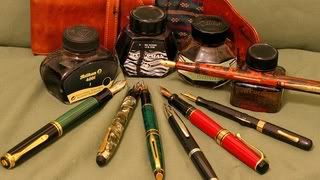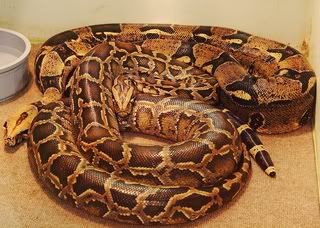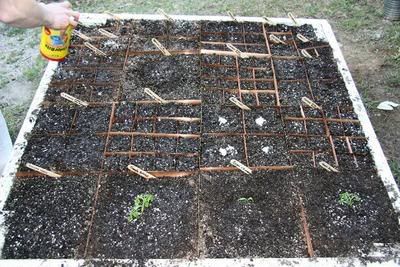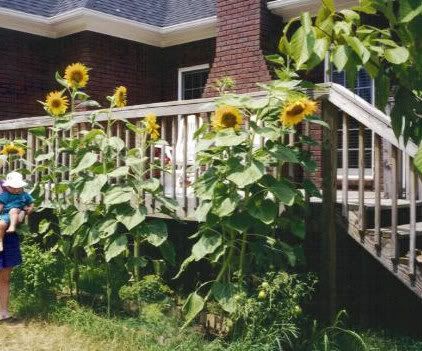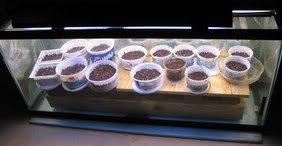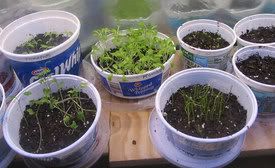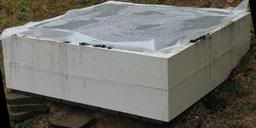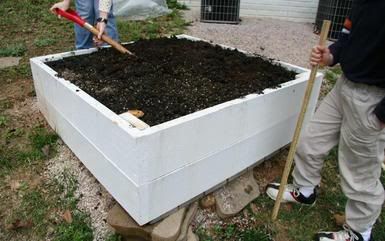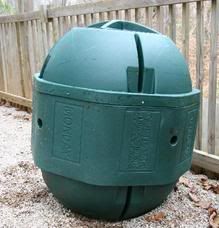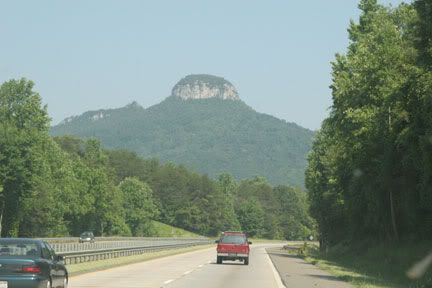
Our Belated Summer RoadTrip Vacation
Unto The West
Warning: This blog entry is incredibly large as it is a summation of 13 busy days with pictures.
Due to scarce time I've not blogged for months. In brief, I've been stamping out disease and saving lives at work (=3 and changing diapers and attending to babies at home. I've made a decision to change jobs and have been doing much paperwork (will write about the job change soon).
Finally, here is our Out-West trip put-off twice in the past 2 years; this was my blog's original raison d'etre. We took 2 weeks off to take a long ass road trip from our town Cary NC to Wyoming and back. I'm glad we did this in the Summer as gas prices sky-rocketed soon after we returned. My wife and I have driven cross-country a couple of times before, but we now had two babies complicating the road trip: our eight-year old and our three-year old. They made the trip more interesting and more inefficient and expensive. When my wife and I were in school, we could drive around the clock, taking turns at the wheel. We drove from the Grand Canyon back to Chapel Hill in just over 3 days or so. It's not possible to do this with screaming babies in the back seats. We found we had to turn in early and find a hotel/motel soon after night-fall each day. We couldn't go into just any Cockroach Inn either due to safety concerns. We definitely couldn't just plop into a deserted campground and pitch a tent in total darkness the way we used to. In general, once you have kids, vacations are entirely all about them and not about you (life becomes so also). Sometimes you have to go back and see the same thing(s) you saw when you were younger just so your kids can see it - even if it means missing out on something new. we had grand plans of camping out in our tent every night almost, but once we hit the road, this plan became impractical. It's very tiresome to pitch a tent with accessories like blowing up an air mattress manually, scrounging for food for everyone, cleaning up and toileting everyone at night, then taking down the tent with accessories, making breakfast for everyone, cleaning/clothing everyone in the morning - all while trying to make good time driving across the country. Thus follows a synopsis of the trip:
6/14/05, Day 1: odometer reading at 41651, time of departure 08:23EDT (original hoped for departure time of 04:00 didn't materialize.) Above we are about to leave NC and enter into VA - that nipple-like prominence at top is Pilot Mountain in the Mount Airy region of NC (ancestral home of my wife's maternal grandmother)
We stopped at 13:12 in Princeton WV to eat at CiCi Pizza ($12.36) and fill up on gas ($35.73 for 17.022gallons, odometer 41989, mileage 22.14mpg).
We then drove on and finally stopped for the day at 19:15 edt in Corydon, IN - got gas at FastPay for $22.44 for 11gal, mileage 23.43mpg. We checked in Hampton Inn (quoted $85+taxes). We ate at White Castle ($16.18), a droll little fastfood place we've never seen in NC - very tiny hamburger meat slices were placed in what we in NC would call a dinner roll. We played putt-putt at GolfShores for $14. My family stopped up the toilet twice at this unusually clean and nice Hampton Inn - first time the plug (my son's) was so solid that nobody could un-stop it, so we changed rooms - my wife promptly plugged up the toilet in our new room. Our original plan was to visit Lincoln's boyhood home memorial in Indiana, but our late arrival and departure precluded that. We drove 596 miles our first day.
6/15/05, Day 2: We checked out of the Hampton Inn after an ok continental breakfast - we were charged $99 total, we didn't contest it due to the multiple plugged commodes. By 11:20edt we arrived in Illinois. We drove out of our way to see the Gateway Arch in St.Louis MO first:
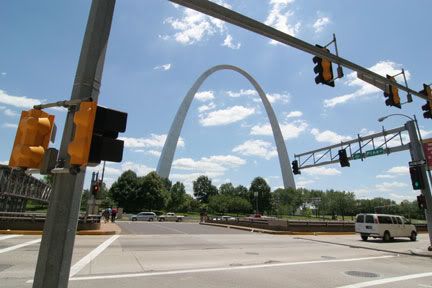
We thought about going up into the Arch like we did 11 years ago, but decided to keep moving. The long wait to ride an ancient and slow elevator ride up a claustrophobic enclosure for a blurry view of the St.Louis riverfront would not have been pleasant with a screaming 3 year-old on-board. We arrived in Springfield IL at Lincoln's home. We paid $2 for parking, took the tour of Lincoln's home, grounds, and neighborhood, bought souvenirs (bust of Lincoln, a President's book, $21).
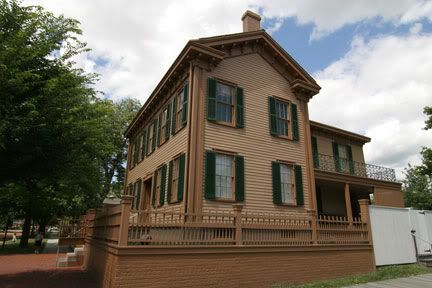
Then saw Lincoln's Tomb
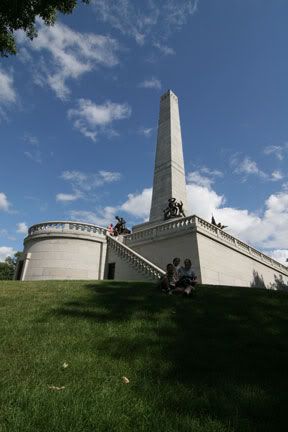
We got gas in Springfield for $35, 16.211gal, mileage 21.05mpg. We decided to back-track a little bit in order to see Samuel Clemen's boyhood home in Hannibal MO. We drove back into Missouri and arrived in Hannibal by 20:18edt - we were actually 7:18pm Central Time though. We checked into a decaying Hotel Clemens (quoted $65/night). We walked around Hannibal, saw the Mississippi river (very scenic little town), ate at Breadeux Pizza ($18.54 + $.50 for gumballs for the kids). We drove 456 miles for the day.
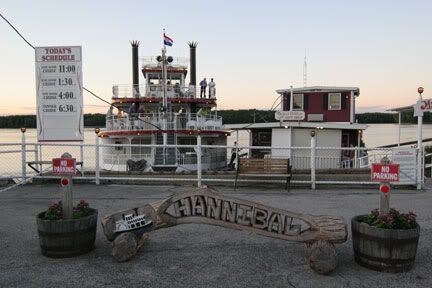
6/16/05, Day 3: We checked out Hotel Clemens after a mediocre continental breakfast (free) - paid $71.89 for the night after taxes. Then we paid up for the tour of Twain's boyhood home and neighborhood - saw Becky Thatcher's house, Grant's pharmacy, walked up to the lighthouse, etc.
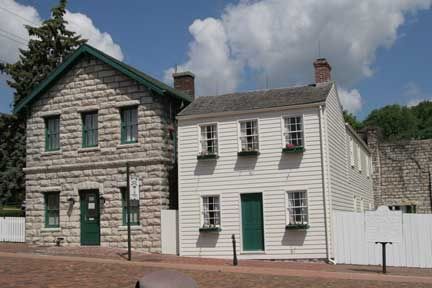
We bought a refrigerator magnet, got gas for $16.15 for 7.806gal (14.72mpg), Then drove out of Missouri and into Nebraska. We decided on the fly to stop by Omaha to see Gerald Ford's birthplace and Warren Buffet's place of business.
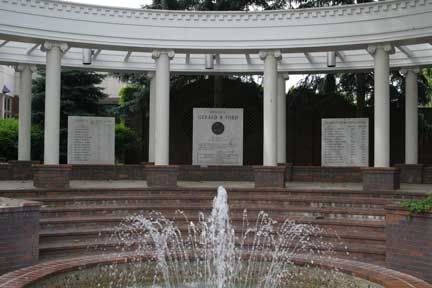
We paid $8.45 for 10 burritos at TacoBells in Omaha. Omaha was a lot more urban than I pictured. I saw that Woodmen's building (remember in About Schmidt). I never knew that Ford was from a broken home - his mom divorced when Ford was less than 1 month old. Ford's biological father's name was Leslie King, so he should actually be called Gerald King. We drove around for over an hour trying to find Buffet's house - I should have brought along his biography so I could locate it better. Here's is a shot of the entrance to his place of business - I went inside and asked to speak with Warren - I was promptly chased out.
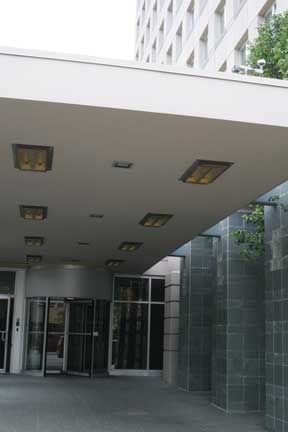
We paid $34.34 for 15.904gal (25.3mpg), odometer 43106. We stopped to get gum and chocolates for the babies. We left Omaha at 20:17edt finally. We arrived in South Dakota, still very light out despite the time. We checked in our second Hampton Inn in Mitchell SD at 22:38edt and was quoted $108/night - we had no choice but to take it. We drove 599 miles this day.
6/17/05, Day 4: We ate a good free continental breakfast and my son stopped up the toilet again with another huge bowel movement. We paid $116.64 for the hotel after taxes - a horrible price, but my son's commode devastation provided our family's unspoken commentary on their prices. We paid $15.81 + $5.08 for 10.22gal of gas in Mitchell (19.14mpg, odometer 43302). We drove past the Corn Palace arguing viciously and took some pictures, but didn't go inside - I knew from 11 years ago that this was just an auditorium-type place, nothing exciting inside.
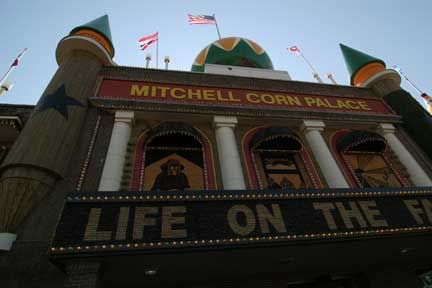
Finally about mid-day, we arrived at one of my favorite National Parks, Badlands SD - we paid $50 for an National Park Pass, thinking we'd visit more than 6 national parks/monuments within the year. we also got a Badlands refrigerator magnet ($3.10).
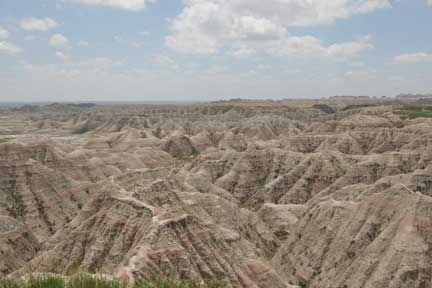
The views in Badlands were marred by too many tourists and their vehicles. We originally planned to camp here like we did the last time we were here, but the incredible herds of tourists made us decide to pass on it. The number of billboards advertising tourist traps had also exponentially increased - they cluttered and ruined the landscape driving into the Black Hills. Back 11 years ago, I remembered it was very scenic and kind of fun waiting for the next Wall Drug sign along the highway into the Black Hills. Now the huge numbers of copy-cat-road-side-kitsch tourist-trap signs was a nauseating spectacle.
We saw our first prairie dogs leaving Badlands - my kids loved them and fought over the binoculars. We stopped at Wall Drug so our kids could gawk at the spectacle. I bought a semi-functional binoculars for my youngest so she'd stop whining.
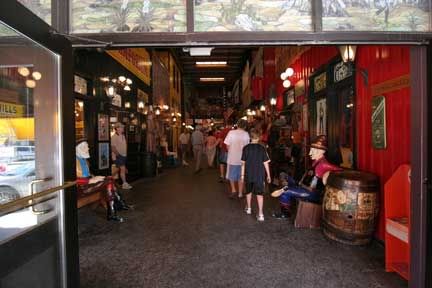
We also bought several kitsch toys, a jackolope figure ($30.37 total). We left Wall and went toward Rapid City where we hoped to camp - bought gas for $31.89, 14.502gal (21.4mpg, odometer 43618).
We decided on a place called Horse Thief Campgrounds in Hill City, SD after much shopping around for campsites. We got two nights for $32.13 - the place looked like trailer-park squalor from the entry, but once you drove into the tent-sites, the area was actually quite scenic with the dark granite black hills in the background.
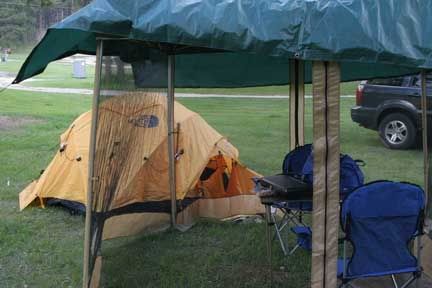
The hot showers and general facilities were adequate, though not spic-and-span clean. We ate at Route 16 Diner (pizza, $27.64), bought some propane at Krull's market ($3.91). We set up our campsite with tent, rain-dining area, etc. Here's a shot of our littlest one the next morning found sleeping in a crevice - she is a habitual crevice-seeker, even at home.
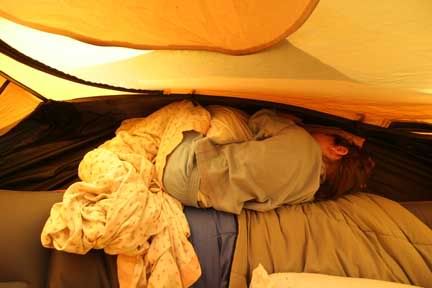
6/18/05, Day 5: We woke up fairly early for SD time as we were still going by our Eastern time. We cooked some ramen noodles and ate this along with leftover pizza from the previous night. We have a MSR Dragonfly stove, but found that for car-camping with kids, the cheap REI-bought Coleman stove with two eyes was much more user-friendly albeit much more bulky.
We drove into Mt.Rushmore and bought a parking pass ($8), toured the facilities, took many pictures, bought a Rushmore magnet ($3.17),
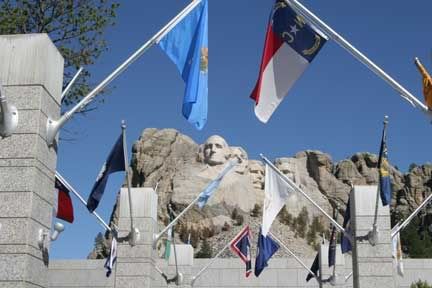
then drove through WindCave National Park where we were greeted with huge herds of bison and many prairie dog towns. It turned out that this was our favorite day of the entire trip as we were literally surrounded by prairie dogs and bison in abundance.

My wife wanted to get out and hike, maybe see some caves, but we had been already had our fill of caves at Mammoth Caves in KY last Spring - I was bored of caves, so we just toured around the surface of Wind Cave, then drove into Custer SD where we ate lunch at Pizza Hut ($21.64). We then drove through Hot Springs SD (where we saw the impressive mammoth bones exhibit 11 years ago) - we decided to bypass the Mammoth bones this time in favor of Deadwood. Along the way to Deadwood I grew tired of seeing the many billboards of the hypocrite Kevin Costner all over South Dakota - for someone who affects being a conservator, his giant self-serving billboards sure did uglify the landscape.
We drove all the way north do Deadwood SD, parked ($2), and toured the kitschy town. We saw where Wild Bill Hickok got shot, saw where he and Calamity Jane were buried, saw a shoddily performed outdoor drama, then got the hell out of Deadwood - it was a dirty town full of motorcycle gangs. It seemed everybody there sported tacky tattoos.
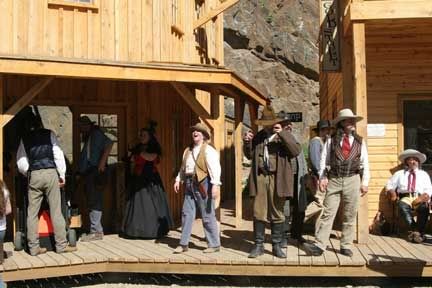
Maybe what gave me a bad taste about this town was that as soon as we got there, my son and I went to a filthy public bathroom next to the tourist office. My son slipped and fell into a 2inch deep cesspool covering the floor of the men's room. We made him strip naked in the car and change clothes as soon as possible - he was very unhappy.
on our way back to Rapid City, we ate at a Taco John's for $12.90, an excellent alternative Mexican fast-food place, somewhat cheaper than TacoBells. We also ate at a dingy Dairy Queen afterward so we could further fatten ourselves up ($10.34). We wanted to see one of the night-time lighting ceremonies at Mt.Rushmore, so we hurried back to camp - it was a dramatic, atmospheric presentation, highly recommended to all patriotic Americans. We logged 266 miles all around the Black Hills for the day.
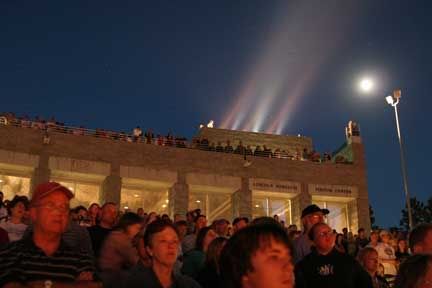
6/19/05, Day 6: We debated briefly staying longer in the Black Hills, but we thought there would be so much to do and see up North, so we semi-reluctantly packed up, ate some more ramen and left Hill City by 12:15EDT - this turned out to be a mistake. Our first goal was to see Devil's Tower National Monument, then up to North Dakota, and maybe Canada. We drove into Sundance WY where we got gas at FreshStart for $35.35 (17.004gal, odometer 44095, 21.2mpg). I mistakenly thought this was where the film festival was (my wife reminded me it was in Park City UT). We visited Devil's Tower, hiked all around it, bought a souvenir magnet ($2.20) - this is a spectacular monument notwithstanding the movie.

We ate at a Subway's on our way back through Sundance ($19.85) - Subway's is supposedly THE WORST franchise one can buy due to their corrupt system of expansion. As I turned out of the Subway's parking lot and drove off, I was ticketed for speeding 45mph in a 35mph zone, about 300yards of leaving the Subways! I later spoke with 2 lawyers in Casper WY as well as indirectly with the area's district attorney about representing me in court. The 35mph sign was tucked in behind the Subway's and there was no way I could have seen it turning left out of the parking lot. I tried to convince them that such hijacking and speed-trapping was unacceptable, but they were too busy to deal was such a trivial case and I had to pay the fine ($92) in the end. I recommend never visiting Sundance WY, the village of Death. We drove North glumly, our vacation seemingly ruined forever by the speedtrap, and at 21:05edt we stopped at Bowman ND and paid $20.19 for 9.53gal of gas (44316 odometer, 23.2mpg) at the unfortunately named Kum & Go. Despite the time, the skies were still bright as mid-day. Along the highway, you could see several groups of pronghorn antelopes all the way into North Dakota. At 22:30edt we arrived in Theodore Roosevelt National Park.
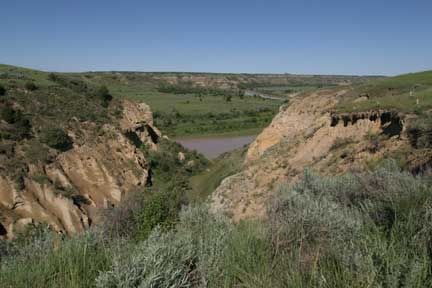
We bought a campsite for $10 at Camp Cottonwoods. We pitched our tent amongst nests of ants and mosquitoes. We attended a Ranger-led talk after night-fall - about 8 groups of people were there including us. The topic was weird though - about Roosevelt's fiance back East. With night-fall, the skies were still very luminescent and clear, and we had a very scenic background of North Dakota badlands. We chose Cottonwoods campground because of our past pleasant experience in a cottonwoods campground at Big Bend National Park in Texas. This particular Cottonwoods in ND however was not quite as good. We drove 482 miles for this day.
6/20/05, Day 7: We had torrential rains overnight and our tent cover was soaking wet. We washed up and ate breakfast - public restrooms here were disgusting, unhygienic, and stank like death. The camp host walked by and admonished us for washing up at our campsite instead of using the bathrooms. We wanted to tell her it was because her facilities stank like death, but we held our tongues. This below is Teddy's cabin where he stayed after graduating college.
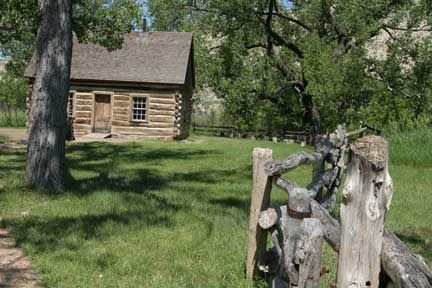
We looked at all the Teddy Roosevelt exhibits, then decided to move on instead of staying several days at the South Unit of the park. We dried our tents the best we could and packed the tent into our car despite the risk of molding. We hiked a couple of trails and spotted some bison and even saw a coyote from afar.
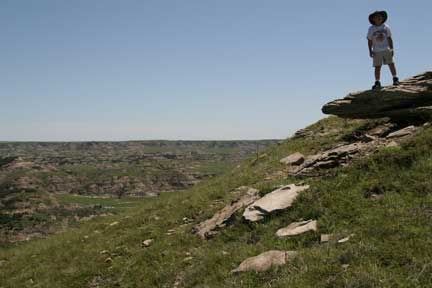
We bought a TRNP magnet ($2.13), then decided to go see the North Unit of the park. We stopped in Belfield ND, ate at Trapper's Kettle ($25.59) - a very interesting though forbidding restaurant which was deserted when we got there. It seemed to us that everybody in ND behaved in a chilly and unfriendly manner, but this may be just a cultural difference. Also our attitudes were still flavored with the stench of the speedtrap ticket in Sundance. We got gas at a Conoco in Belfield for $15.35 for 7.046gal (odometer 44469, 21.7mpg).
We arrived rather late to the North Unit of T.Roosevelt National Park - we walked around the ranger station exhibits where my son performed a successful bowel movement. We drove all the way around the North Unit looking for bison (saw about 12 of them), tried to find some bighorn sheep (never saw them). The temperatures were 95+F despite the latitude - I had to buy the babies some Sunkists as they became extremely diaphoretic from all the walking around. We didn't find any favorable campsites away from the sun and heat, so we decided NOT to camp at the North Unit - we went out toward Bismarck (and toward home).
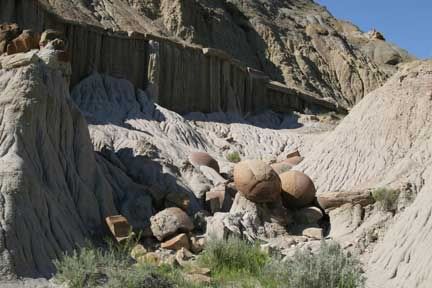
This totally altered our original plans to go see Canada and visit into Montana. But the stifling heat and unfriendly folk (and the speeding ticket) made us want to go home.
We drove past the World's Largest Holstein Cow on the highway and we took Exit 159 to Bismarck - we found and were quoted $98 for a night at Country Suites ($107.91 total) in Bismarck. We ordered Domino's Pizza ($20) and bought $3 of drinks from a vending machine (profligacy). My wife washed up all our dirty laundry (including the cesspool dunked Deadwood clothes) at the hotel for $2. This hotel had a spectacular pool with huge fun-house slides but we were too busy to play (to my son's bitter disappointment). We drove 352 miles for the day.
6/21/05, Day 8: We ate an outstanding full breakfast for free. Overall an outstanding hotel, highly recommended.
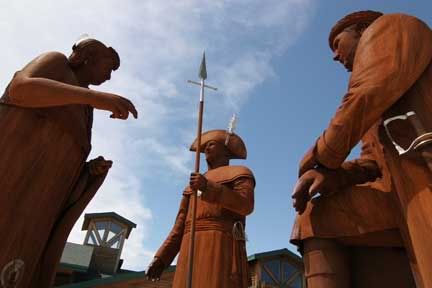
We drove into Bismarck, first went to see the Lewis & Clark Center, then paid for and went to see the Ft.Mandan sites ($20). We bought souvenir magnets ($6.31) and my son bought an arrowhead for $.53. This was a very educational, mildly interesting site, but the actual fort is actually sunk deep underwater and the displayed fort is a staged reproduction. My wife liked it, but I didn't think it was worth the price of entry.
We stopped to take a closer look at the ND state capitol in Bismarck - my wife wanted to go inside, but we were running short of time I thought (we probably should have visited this one).
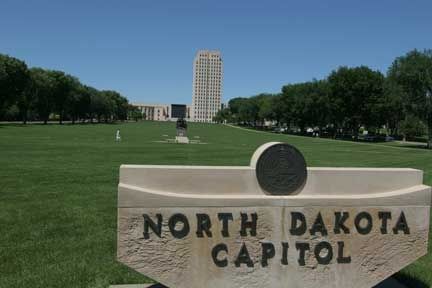
The capitol was very odd - it looked like a standard office building tower. I guess out here amongst nothing, a rectangular boxy 19-story building appears impressive. We bought gas at Tesoro for $36.42 for 16.563gal (20.84mpg). We then took a tour of the Mandan On-a-Slant Indian Village near Jamestown ND. This was an interesting tour and was part of the $20 L&C Center fee. The Mandan earthen huts looked very much like Mongol yurts and harked back to the ancestral heritage of the North American "native" people.
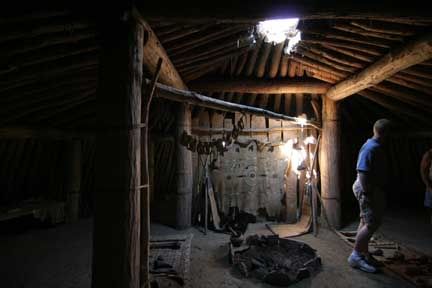
If you look at old daguerreotypes of Indians from the 1800s, you see better their northeast Asian features. It's funny how there isn't much made of this nowadays, but I'd think you could in truth classify the North American "Indians" as North East Asians originally, only later admixed with the Spanish and then the Northern Europeans. So it's not surprising that Columbus thought he had found "Indian" - in fact he had found North-Eastern Asians. I'm sure all Asians looked the same to him. It's funny that the "native" Americans, are now wanting to go back to being called "Indians" - it's all so messed up that it makes your head spin.
We also paid $18 to tour George Armstrong Custer's last home before he set out for the Battle of Little Big Horn. I thought this tour was quite worth it - a very polished University of North Dakota student led the tour dressed in period cavalry uniform. This was in fact a very sad story as told from the perspective of Custer's family and young wife.
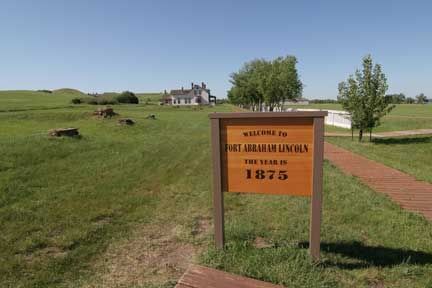
We bought more gas at an Amoco in Jamestown ND for $11.75, 5.444gal (23.1mpg). We saw the World's Largest Buffalo. That's not me posing in the picture, just a chubby dude who presented himself conveniently for use as my scale model.
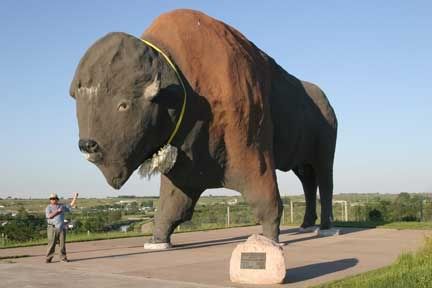
We also saw White Cloud the white buffalo from afar at this small kitschy exhibit. We ate at another Subway's in Jamestown ($17.89), then stopped at a Walmart to buy some DVDs, some junk food ($27.19). We ended up at another Country Suites in Fargo ND ($85.52). With all the touring this day, we only drove 345miles. One of the awesome things in driving around North Dakota was how light it was outside even close to midnight - it must be even more like this in Canada and Alaska in the summers. We could literally see both the sun and the near-midnight moon in the same sky, which made for a very other-worldly ambience.
6/22/05, Day 9: This Country Suites was pretty good, and cheaper, but not as good as the last one - the breakfast was good. we departed Fargo after buying more gas for $10.62, 5.182gal (18.7mpg odometer 45037). We had decided that we were headed home, but I wanted to see Sauk Centre, MN, the home of Sinclair Lewis. One of the great American novels I would recommend to any medical student or aspiring one, is Arrowsmith, a surprisingly forward-looking novel about a medical researcher. We did stop by the Lewis interpretive center, only to find that the tours of his house had closed for the day. The center was still very good, it even had his highschool diploma and Nobel Prize certificate, as well as the funerary urn which enclosed his ashes.
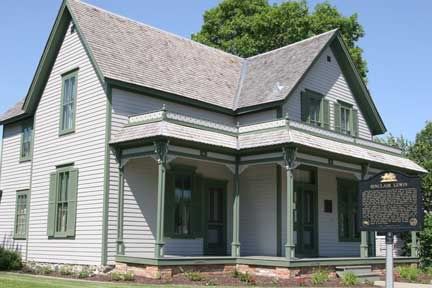
We went by his house anyway to look at his neighborhood. He was actually physically brought into the world by his family (his father or uncle?) in a house across the street from his. His was a family of doctors, as reflected in some of his novels. We visited his shockingly humble grave:
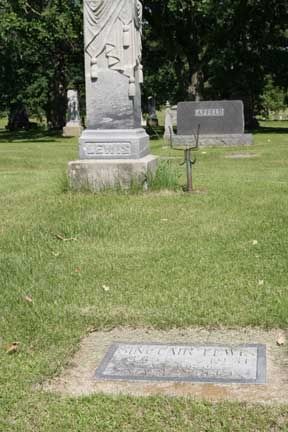
We filled up with gas at Sauk Centre ($25.07 for 12.003gal, 20.25mpg), then drove toward Minneapolis - we stopped and ate at a cheap/good place called Old Country Buffet in St.Cloud MN ($25.79). St.Cloud itself was a dumpy city in the mode of a New Jersey roadside city.
We had hoped to find a great hotel in Bloomington MN, but the entire area around the Mall of America was absolutely stuffed full - I called about 15 different hotels and my wife went into a Hilton to talk to a concierge-type girl who called everyone she knew also. There was nothing except for a smoking room with one bed but they could let us have a couple of roll-outs. So I scouted about and we drove to St.Paul, MN - I called and found out some rooms were available in downtown St.Paul - my wife went in to a downtown Radisson late a night and was quoted $100 (it turned out to cost $131 total including parking and taxes) - we had no choice but to take it. We got a decent tour of St.Paul driving around looking for rooms; here's St.Paul's cathedral at dusk:
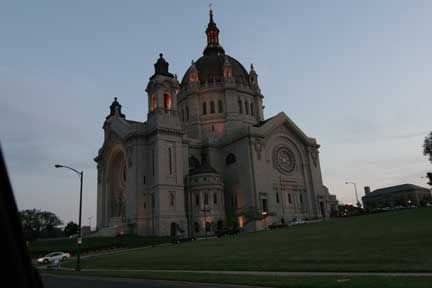
Overall a disastrous day. Only 200+ miles driven and most of the day wasted looking for hotels. One of the things we noticed was there was a lot of gas stations selling "gasohol" containing alcohol-admixed gasoline - we found this reduced our gas mileage by at least 10%. Since the price savings were not too significant, this made the gasohol a bad deal in our view, but maybe it's better for the environment?
6/23/05, Day 10: The Radisson was a decrepit stinkhole with non-functioning air-conditioning, but their free full breakfast made it slightly more bearable - this was the best breakfast we'd had the entire trip: hot pancakes and waffles and French toast, fresh scrambled eggs, bacon (though not for me), variety of cereal and juices, fruits, yogurts. And so we went on to visit the Mall of America, an over-hyped gargantua which would turn out to sorely disappoint.
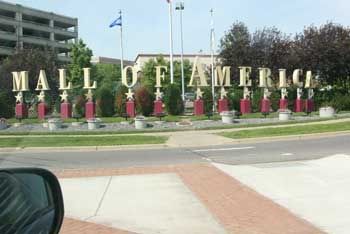
It was basically just another mall with the same set of 36-50 stores we find in every mall we'd ever been to. The Camp Snoopy area (indoor amusement park) was over-priced, bland, and dead. The large Lego-land area was similarly boring, even to our 2 and 8-year-old surprisingly. we did buy a souvenir magnet ($2.08) and got a bagful of Kit-Kats for like $.50 per bar at a bargain outlet. My son and I played some arcade basketball at a sports bar for $2, then we got the hell out of the largest mall in America. I would highly recommend AVOIDING this anti-mecca. My son and baby ate up the 10+ Kit-Kats in the car within a couple of hours as we headed out of the Minneapolis area.
We drove through Rochester MN and glimpsed the Mayo Clinic buildings - my wife had interviewed here for residency and decided against listing it on her match sheets because their entire system was so odd. I interviewed at a similarly decadent system, the Cleveland Clinic. I think both hospitals are outstanding clinically, but they are too "tertiary" (sub-specialized) to make good training grounds for residents and interns. You need a lot more bread and butter medicine and less "zebras" during training. Also you need to suffer and get hammered during residency to learn enough and stay humble - I have since found that most Mayo and Cleveland Clinc trained doctors I've run across act spoiled and pampered and whine easily. We drove past the Spam museum but it was closed.
We decided to visit Pepin WI to see where Laura Ingalls Wilder was born and lived for a time. It turns out her actual log cabin in Pepin is gone, but a reproduction is set in the middle of nowhere. There is also a Laura Ingalls Wilder interpretive center in the Pepin visitor's center, but it's just a message board full of pictures of Laura and her husband at various stages of their lives.
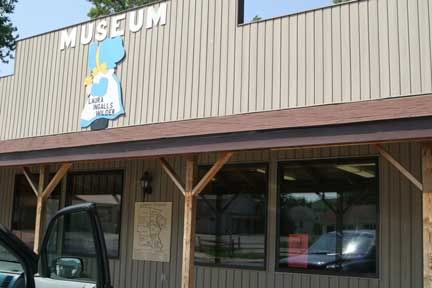
It turns out there are about a dozen or more "Laura Ingalls Wilder" homesites throughout the MidWest and westward - we were originally going to visit the one in De Smet, SD but thought the one in Pepin would be better since it was her birthplace - it turns out we should have visited the one in SD according to the information available in Pepin. Some people apparently do the Wilder tour of every house and homesite she lived or travelled through. Laura's dad Charles, despite her glowing assessment of his prowess in her books, must have been a fairly unsuccessful and struggling man in his lifetime to have moved around so much with a young family. I'll stop short of calling him a loser, but call him a semi-drifter.
We got gas in Pepin for $35.20, 15.652gal (odometer 45605, 20.81mpg). Then on to Iowa. I knew several Iowans from my student days and always had heard good things about the state. In Mason City IA, we got gas again at a Fleet Farm for $16.12 for 7.717gal. We checked into a BestWestern in Clear Lake, IA (quoted $77), ordered Pizza ($22.03) again, and had an NBA championship viewing party in our room with chips and drinks ($9.80) - alas the Pistons got beaten by the Spurs. We drove about 500 miles that day.
6/24/05, Day 11: We ate BestWestern's mediocre continental breakfast - typical BestWestern mediocrity. We discussed what to do next and how to get home from here. We saw unusually large numbers of obese people in Iowa - it made us wonder whether it was merely heuristics, or whether Iowa really is populated by hefty hordes of corn & beef eaters. At 11:43edt we left Clear Lake and drove toward Des Moines. We glimpsed the capitol of Iowa from the car and got lost in west Des Moines looking for an AAA branch to get some tourbooks and maps. We filled up on gas in Kansas City ($35.23, 16.625gal, 19.33mpg) - a truly disgustingly slovenly gas station.
We went by Independence MO to see Truman's last house and place of death/burial
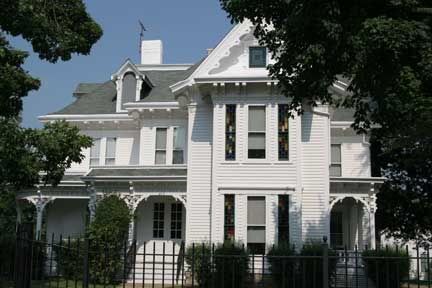
There was a jail where Frank James of the Jesse James gang was supposedly briefly detained - we resisted going for the tourist trap. We went a little bit out of our way to take a look at Lamar MO, the place of Harry Truman's birth - this is one of the tiniest mid-Western towns we saw, basically just a blip on the map, a trivial town only famous because of one man. His birthhouse is enshrined like a holy grounds there.
We got gas at a Conoco near Lamar ($14.25 for 6.957gal, 20.61mpg) and drove out of Missouri forever. we checked into a Courtyard Marriott in Bentonville Arkansas (quoted $61, paid $68.93). We ate yet another Subways ($21.50) as well as some more junkfood ($5.10). We swam in the Courtyard's clean swimming pool. This was one of the best hotels of the trip but no free breakfast. We drove about 465 miles this day.
6/25/05, Day 12: We woke up and visited Sam Walmart's first store and museum in Bentonville, saw his old office (left in original condition), his last wallet and fountain pen, and saw his famous red Ford pick-up truck:
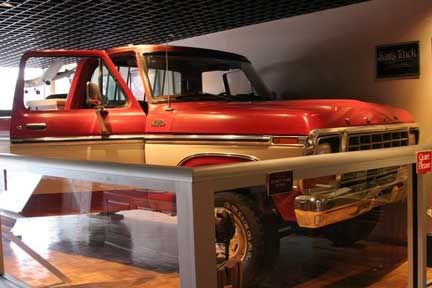
We ate TacoBells at 12:47edt for $9.70 in Lowell AR, then stopped at LittleRock for gas at $31.33 for 15.215gal (21.68mpg). We thought for a second of visiting Clinton's library, then drove on to Hot Springs National Park.
When we arrived in Hot Springs AR, we were disappointed to find the town so run-down and decrepit. There was a campground, but it was as scenic as our backyard. We quickly decided that we'd make a day of Hot Springs, but head home before night-fall. The old bathhouses in Hot Springs were somewhat interesting.
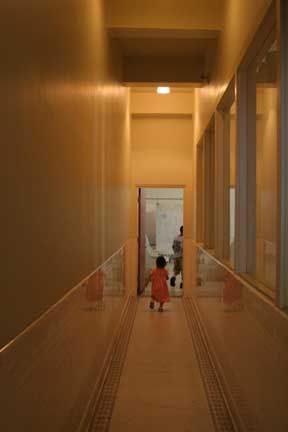
We watched a film of HotSprings at the park's main office. We hiked straight up a hillside to take in a view of HotSprings from it's highest point (dead Chief's Trail). We saw the highschool where Bill Clinton had many ribald adventures. We bought our desultory souvenir magnet ($4.33), looked at all the kitsch Bill Clinton souvenirs (most of them bawdy - like "I did not play Sax with that woman."), then drove out of that grimy, moldy, decrepit city.
We stopped for supper at a Luby's cafeteria in Little Rock ($27.99) - very overpriced for what little we got I thought. We found yet another Courtyard Marriott here (quoted $84, paid $93.66) which was undergoing renovations - I thought the worst Courtyards I've ever seen in my life; it changed my perception of Courtyards forever. We drove about 400 miles this day.
6/26/05, Day 13: We checked out of Courtyards at 12:05edt and drove out of AR and into Tennessee. We got gas in Jackson TN for $32.72, 15.586gal (22.1mpg), then stopped to eat at an IHOP in Jackson ($28.97). We checked into a dirty LaQuinta Inn in Nashville TN (quoted $71, paid $81.24). We swam in a pool again here. We went and saw the TN capitol grounds in Nashville, saw statues of Andrew Jackson, Andrew Johnson, and the Capitol building from the outside. We saw James K. Polk's final gravesite.
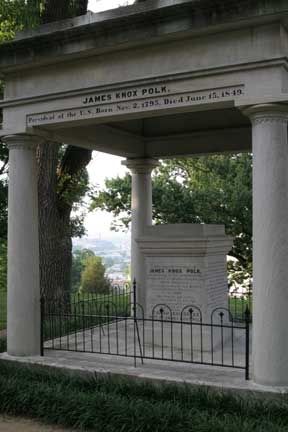
We only drove about 300 miles this day as we needed a break before the long drive home.
6/27/05, Day 14: We checked out of the filthy LaQuinta (probably the worst hotel, the worst deal of the trip) and drove out to the Hermitage near Nashville - $27 entry fee and we bought a souvenir bust of Jackson for $32.78. The tour of the Hermitage was poorly narrated by some very uninterested (or uneducated?) ladies - they couldn't answer any questions asked.
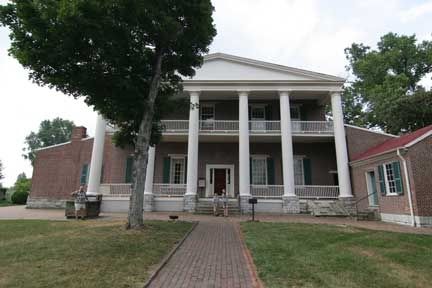
Despite his Indian-killing habits, Andrew Jackson was probably the most ambitious American President, one of the most exciting figures in American history, and probably the closest America came to having a "King." One could have made the Hermitage and Jackson's narration very exciting, but none of this was reflected in this dreary tour. I've found that none of the tours of President's homes we've done in the past couple of years have been particularly exciting - we toured Washington's Mount Vernon, Jefferson's Monticello, James Madison's Montpelier, as well as the President's homes mentioned in this trip like Lincoln's Springfield home. My favorite was probably Washington's Mount Vernon. In any case, the Hermitage was par-for-the-course as far as presidential homes are concerned. We did see Jackson's tomb and his plantation etc.
We got gas at a Pilot in Cookeville TN for $20.67 (22.145mpg), then drove out of TN and into western NC, a welcome sight. This trip was starting to become a pain in the ass and everything we saw started to look boring; we just wanted to get the hell home. We stopped at an NC tourist center near Asheville and emptied our bladders into their toilets. We drove into the triad area of NC by 19:41edt and filled up at an Exxon in Kernersville for $34.32 (16.043gal, 23.2mpg). We stopped in Elon NC at a Golden Corral for our end-of-trip dinner ($22.28 - it was fortuitously kids-eat-free night). Thus our trip ended and we arrived home to Cary NC by 22:30edt to find everything safe and sound.
Here is a scene from a rainy July 4th in Cary NC a couple of weeks after our trip:
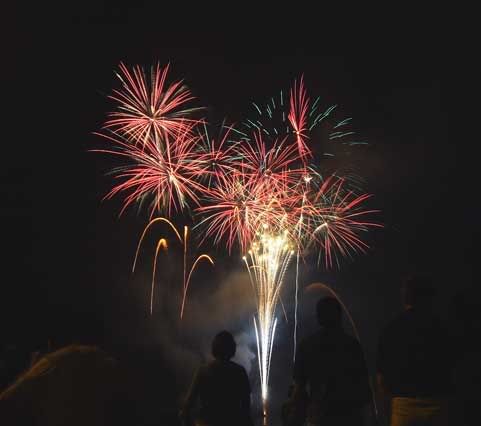
We had driven 5,192 miles over 13 days. We had spent $2,349.96 on this trip. A lot of weight was gained eating all the junk and restaurant food - never again, please.
Toward the end of our trip while we were driving home, we decided to take a poll ranking the places we visited on a scale of 1-10 ("10" being outstanding, unbeatable, and "1" being total SUCK). This may reflect our psyches more than anything else, but I thought it might serve some purpose (in the way rottentomatoes may help decide which movies are worthwhile). Only our 8-year-old, my wife, and I ranked the places, our 3-year-old was sleeping.
Favorites (ratings of "8" to "10"):
--our son's favorites: Hannibal MO, Wall Drug, Wind Cave National Park (bison herds), Mt.Rushmore, Devil's Tower WY, George A. Custer's last home. Wind Cave bison herds were rated a "10"
--my wife's favorites: Hannibal MO, Mt.Rushmore, Wind Cave NP, Devil's Tower, Lewis & Clark center and side trips in ND, George A.Custer's house. Her highest rating: a "9.5" for Mt.Rushmore.
--my favorites: Hannibal, MO, Badlands SD, Mt.Rushmore, Wind Cave NP. My highest was a "9" for Wind Cave's bison herds and prairie dogs.
So our family's favorite place was defnitely the Black Hills of South Dakota with Wind Cave National Park and Mount Rushmore as well as the camping out there. We would have stayed at Horse Thief Campground the entire time if we had a retrospectoscope.
Least Favorite Places (ratings of "4" or less)
--our son's worst: Golfshores in Corydon IN, Omaha, Corn Palace in Mitchell SD, Sauk Centre MN, Truman's house of birth and death, Hot Springs National Park. His worst was a "1" given for Corn Palace.
--my wife's worst: Golfshores in Corydon IN, Omaha tour, Corn Palace, Badlands SD, Deadwood SD, Sauk Centre MN, Pepin WI, Truman's Independence and Lamar. Her lowest rating was a "3" for Corn Palace.
--my worst: Omaha tour, Corn Palace, Sauk Centre MN, Pepin WI, Truman's Independence and Lamar. Lowest ratings were "3" for Corn Palace, Sauk Centre, Pepin, and Truman's places.
The voting was flavored by the fact that we were arguing viciously during the Corn Palace stop - otherwise this should not have gotten such a low score. If Sinclair Lewis' home were open for the tour it would not have gotten such a low score either. Same with Truman's home in Independence and Lamar. The experience at golfshores was ruined because my son had to run off to do an emergency bowel movement - he stopped up the toilet in the hotel room remember. So taking all those by-lines into consideration, I'd have to say that Pepin WI was probably the biggest waste of time.
Quick Summary of the Major Places seen:
National Parks/Monuments
St.Louis Gateway Arch
Badlands National Park, SD
Mount Rushmore monument, SD
Wind Cave National Park, SD
Devil's Tower National Monument, WY
Theodore Roosevelt National Park, South Unit, North Unit, ND
Hot Springs National Park, AR
Presidential Sites
Abraham Lincoln's home and Tomb, Springfield, IL
Gerald Ford's birthsite, Omaha NE
Theodore Roosevelt's western cabin home, TRNP ND
Harry Truman's birthplace (Lamar MO) and deathplace/tomb (Independence MO)
Bill Clinton's highschool (Hot Springs AR), and presidential library (Little Rock AR, driveby)
James K. Polk's tomb (Nashville TN)
The Hermitage, Andrew Jackson's home and tomb, TN
State Capitols seen
Charleston WV
Springfield, IL
Bismarck, ND
St.Paul MN
Des Moines, IA
Little Rock, AR
Nashville, TN
Miscellaneous Tourist Sites
Mark Twain's boyhood home, Hannibal MO
Corn Palace, Mitchell SD
Wall Drug, Wall SD
Wild Bill Hickok and Calamity Jane's tomb, Deadwood SD
Ft.Mandan/Lewis & Clark Center, Mandan ND
Mandan Indian village, George A. Custer's home in Ft.Lincoln State Park, ND
World's Largest Buffalo and White Cloud the white buffalo, Jamestown ND
Sinclair Lewis interpretive center, home, gravesite, Sauk Centre, MN
Mall of America, Bloomington, MN
Laura Ingalls Wilder birthplace, log cabin, and center, Pepin, WI
Spam museum
The first Walmart


